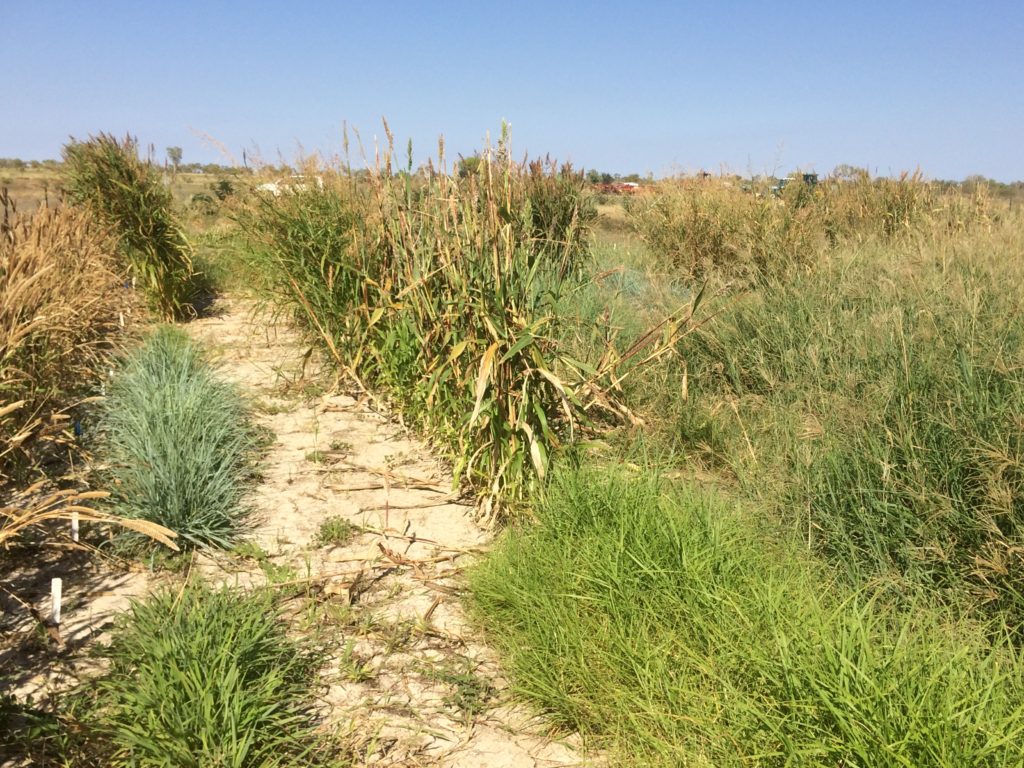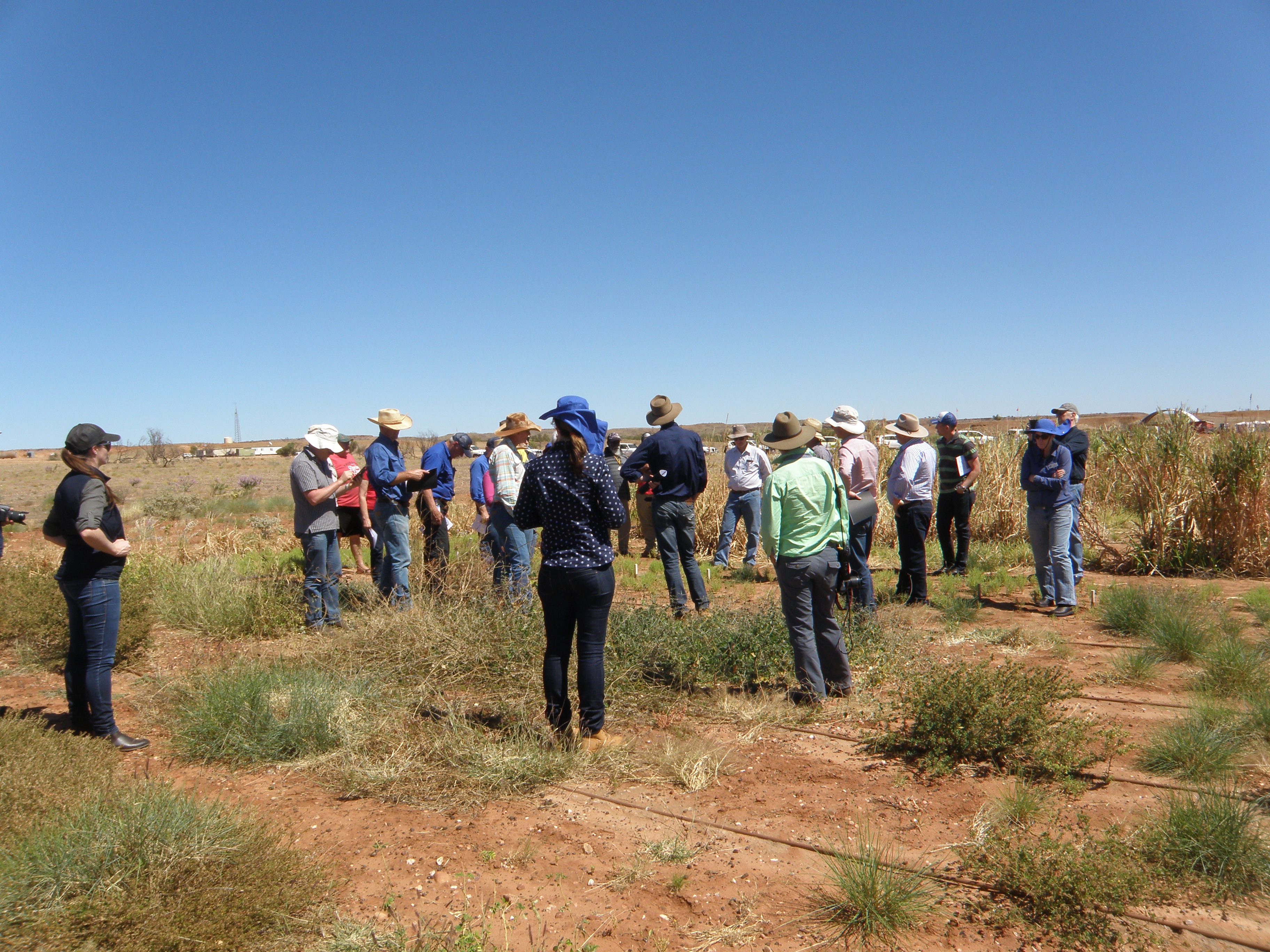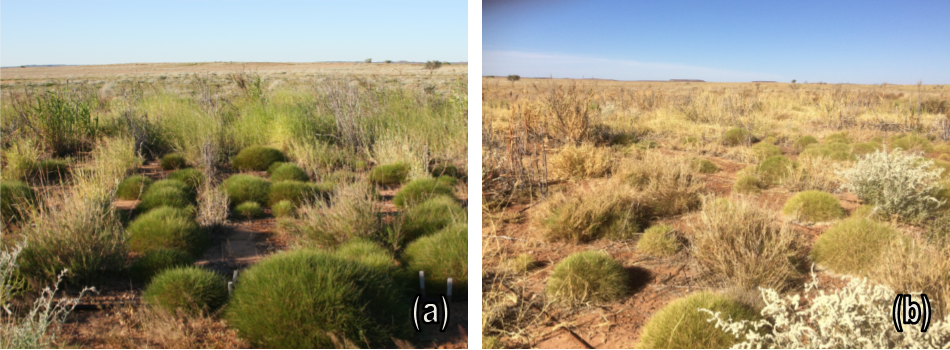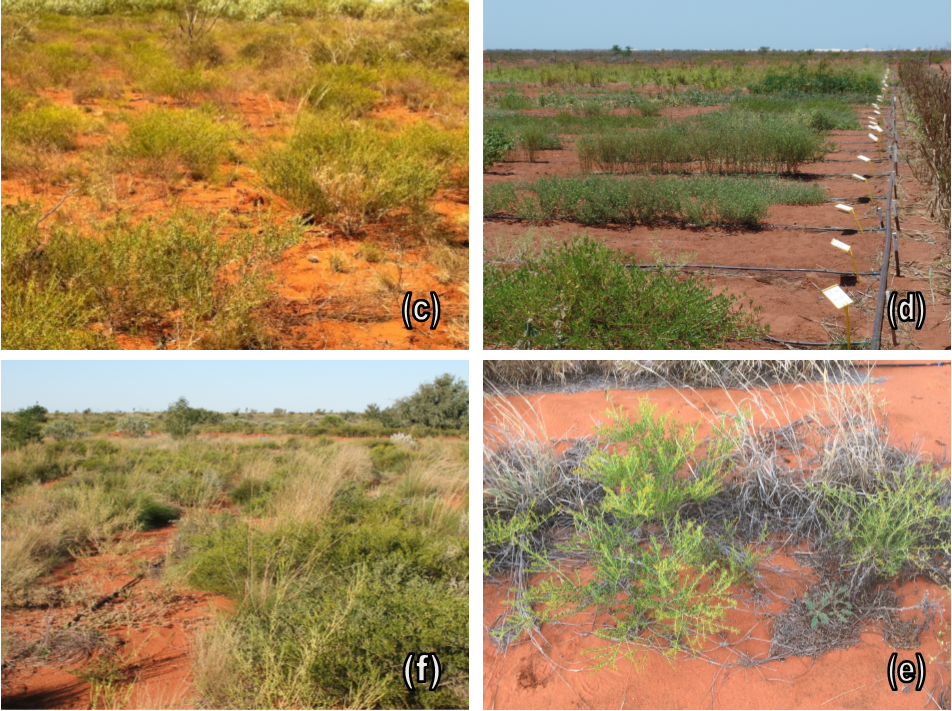Field evidence – Risk of agricultural plants becoming environmental weeds
Northern Western Australia is a vast region widely recognised for its spectacular landscapes and unique ecosystems with high environmental, economic, social and cultural values. The WA rangelands are also a source of great mining wealth and contain large areas under pastoral production which are supported by infrastructure such as roads, rail, and ports.
The viability and sustainability of agricultural systems, including pastoral enterprises, may be improved by the introduction of non-indigenous (exotic) plant species. However, there is clear evidence that throughout Australia, some introduced non-indigenous species have established in non-target areas and some have become environmental weeds.
A series of field trials have been established in the west Kimberley and Pilbara to evaluate the persistence and/or spread of a wide range of agricultural species. These trials will inform policy on balancing agricultural potential with environmental risks.
Traditionally, agriculture in the WA rangelands has predominantly relied on the grazing of stock on native vegetation, with the development of irrigation precincts around Carnarvon and on the Ord River near Kununurra. However in recent years, there has been considerable interest in irrigated mosaic agriculture in the west Kimberley and Pilbara. There is also a potential role for improved dryland pastures in medium to high rainfall areas of the Kimberley.
Since most of northern WA is under pastoral lease, a diversification permit from the Pastoral Lands Board (PLB) is required to grow non-indigenous species. As part of the permit’s approval process, the PLB seeks advice from the departments of Primary Industries and Regional Development (DPIRD) and Biodiversity, Conservation and Attractions (DBCA) on the ‘weediness’ of the proposed species.

Methodology
A focus of DPIRD’s Northern Beef Development project is to inform weed risk policy settings and strengthen the weed risk assessment process. As there is not much data on many of the agricultural species in the Kimberley and Pilbara, weed risk assessments are generally based on a desk-top analysis.
The research project proposed to collect field data from a series of ‘weed risk’ field nurseries in four key environments (climate, soils) across the west Kimberley and Pilbara (Table 1) to support weed risk assessments.
Table 1. A summary of site details for the field nurseries
| Site | Location (Station) | Soil Type | Long-term annual rainfall (mm) | Date established |
|---|---|---|---|---|
| 1 | Derby (Birdwood Downs) | Red-brown sand (Pindan) | 600 | Apr-15 |
| 2 | La Grange (Wallal Downs) | Red-brown sand (Pindan) | 350 | Apr-15 |
| 3 | Woodie Woodie (Warrawagine) | Red-brown loam | 300 | Sep-15 |
| 4 | Fitzroy Valley (Gogo) | Grey-black cracking clay (Vertisol) | 570 | Apr-16 |
The nurseries were established under irrigation to simulate the worst case scenarios such as plants establishing and setting seed following a tropical cyclone and, an extremely high rainfall year.
There were two replicated trials at each site. The grass trials had 23 entries that included a range of warm season (C4) annual and perennial grasses such as Rhodes, panic, buffel and a selection of sorghums and millets. Each entry had plus and minus (+/-) fertilizer sub-treatments and each combination was replicated three times.
The legume trials had 23 entries and included tropical legumes such as lablab, cowpea, siratro and butterfly pea, a range of stylos and the fodder shrub leucaena, plus the temperate legume lucerne. Each entry had +/- fertilizer and +/- rhizobia sub-treatments (the seed being inoculated with the correct rhizobia).
The sites were cleared before the treatments were sown as three meter rows and irrigated, to assist seedling establishment. The sites were kept largely ‘weed’ free to provide the best possible conditions for growth and seed production. Once the plants were well established (6-12 months), the irrigation was gradually turned off and there was no further control of non-sown species, either native or naturalised.

Key results to date

There was generally good to excellent establishment across all sites. The trials are providing valuable data on the adaptation of a wide range of agricultural plants, to the soils and climate in northern WA.
- There has been a similar pattern across all the field nursery sites. After the irrigation was turned off, the original vegetation re-colonised much of the site including many rows of sown species. For example, at Wallal Downs the native vegetation, in particular poverty bush (Acacia stellaticeps) and spinifex (Triodia spp.), are rapidly re-colonising the site. See photos above and below.

- In general, the native vegetation is much better adapted to the stressful conditions over the ‘dry’ season, which in some years can extend up to nine months. Under these conditions the native woody shrubs displayed fresh growth while the best adapted perennial grasses had less than five per cent green leaf.
Grasses
- Across all sites, the most competitive sown grasses were buffel and birdwood. While Rhodes grass can persist and spread under favourable conditions through its stoloniferous growth habit, it has persisted poorly under dry conditions. A snapshot of the results from Wallal Downs and Woodie Woodie is summarised in Table 2.
- While the annual warm season grasses such as sorghum, millet, maize were very competitive when sown, there has been little recruitment after they senesced, despite large amounts of seed being set.
Table 2. A summary of persistence of perennial grasses to March 2018 at Wallal Downs and to November 2018 at Woodie Woodie
| Species | Common name (variety) | Wallal Downs | Woodie Woodie | ||
|---|---|---|---|---|---|
| No fertiliser | Plus fertiliser | No fertiliser | Plus fertiliser | ||
| Cenchrus ciliaris | Buffel grass (Biloela, Gayndah) | /// | /// | /// | /// |
| Cenchrus setiger | Birdwood grass | /// | /// | /// | /// |
| Chloris gayana | Rhodes grass (Callide, Finecut, Katambora) | | | /// | /// |
| Digitaria eriantha | Digit grass (Premier) | X | X | | X |
| Digitaria milanjiana | Finger grass (Jarra) | X | / | / | / |
| Megathyrsus maximus | Panic grass (Gatton, G2, Megamax059) | X | X | X | X |
| Panicum coloratum | Bambatsi panic | / | / | // | // |
| Urochloa mosambicensis | Sabi grass | (/)* | (/)* | (/)* | (/)* |
| *Results may have been affected by the low number of plants which established | |||||
| Legend: /// => More than 80% persistence; // => 40-80% persistence;/ => 11-40% persistence; - => <10% persistence (just alive); X => Nil (did not persist) | |||||
Legumes
- At each site, only a small number of legumes have shown fair to good persistence, either as perennials or through seedling recruitment for annual species.
- While some of the tropical annual legumes like lablab and cowpea established and grew well across a number of sites, there have been few to nil recruits and they have failed to persist despite setting a large amount of seed.
- Lucerne has failed to persist across all sites.
- Across a range of sites, the stylos have been the best performed legumes.
- On the cracking clay soils in the Fitzroy Valley, Caatinga stylo (Stylosanthes seabrana) has shown good persistence to date.
- On the loamy soils at Woodie Woodie, the shrubby stylos (Stylosanthes scabra) are showing excellent persistence through numerous recruits, while the Caribbean stylo (Stylosanthes hamata) which behaves as a long-season annual has persisted well through recruits at a number of sites.
- Termites continue to damage the leucaena plants at Wallal Downs along with other ‘woody’ plants such as shrubby stylos.
Next steps
DPIRD is reviewing the weed risk assessment process in conjunction with the results of this project.
The monitoring is expected to continue for at least a further two years so that hard-seeded legumes have the opportunity to germinate and establish. This will also ensure the results will have been obtained through a sufficient monitoring period.
Further information:
Contact: Geoff Moore 08 9368 3293; email: geoff.moore@dpird.wa.gov.au
Last updated: 14 February 2019